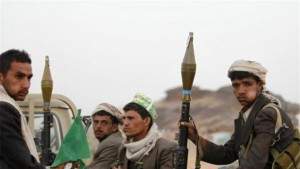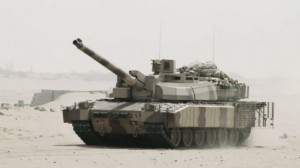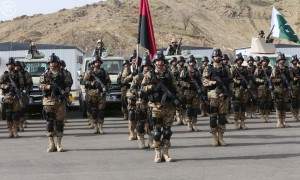The Saudis have studied the master
August 9, 2023 by Thomas Wictor
Sun Tzu (544 BC - 496 BC) was a Chinese general and author of The Art of War. It’s absolutely clear that the Saudis have studied him.
All warfare is based on deception. Hence, when we are able to attack, we must seem unable; when using our forces, we must appear inactive; when we are near, we must make the enemy believe we are far away; when far away, we must make him believe we are near.
—Chapter I: Detail Assessment and Planning
My theory is that the Iranian nuclear deal is an audacious deception operation by the P5+1 nations designed to give Israel and the Sunni Arabs a casus belli to attack Iran. The war will not focus on the Iranian nuclear facilities but also destroy Iran’s offensive military capabilities.
People think that this theory is insane. I perfectly understand, and I’m not offended.
However.
The Saudis just pulled off one of the greatest military deception (MILDEC) operations in history. It makes my theory about the Iranian nuclear deal much more plausible. First, let’s recap the Saudi-led military action in Yemen.
On March 26, 2015, a Saudi-led coalition of ten nations began an air campaign against the Shi’ite Houthi rebels in Yemen.
The operation was called Decisive Storm. Yemen fell into chaos on January 27, 2011, during the Arab Spring. Civil war broke out on May 23, 2011, and on June 3 President Ali Abdullah Saleh was seriously injured by a bomb planted in the mosque on his palace grounds. On November 23, 2011, Saleh flew to Saudi Arabia and transferred power to Vice President Abd Rabbuh Mansur Hadi.
Running unopposed, Hadi was elected transitional president on February 21, 2012. When the Iranian-backed Houthi rebels took over Sana’a in September of 2014, Hadi attempted to form a unity government with them, but they refused. After his own political party rejected his cabinet choices in November of 2014, Hadi resigned on January 21, 2015. The Houthi rebels declared themselves the new government, despite the UN not recognizing their legitimacy. Hadi fled to Aden, where he gave a speech denouncing the Houthi government as unconstitutional. Then he flew to Saudi Arabia.
Operation Decisive Storm began the next day.
Now for the brilliant part.
Western “military experts” have been predicting disaster for the Saudis since the beginning. One reason is all the reports of problems between the Saudis and their allies. On April 21, 2015, the Saudis announced the end of the air campaign and the beginning of a new phase, Operation Restoring Hope. However, air strikes in fact continued. This was said to be the cause of friction among the allies.
Saudi-UAE relations tense following military action in Yemen
Saudi-UAE relations are becoming increasingly tense due to the disagreement between the two countries over regional issues and particularly over the rapidly unfolding events in Yemen, a source told Arabi21.
The Saudi source, who spoke on condition of anonymity, added that the atmosphere and the details of the visit made to Riyadh by Abu Dhabi Crown Prince Mohammed Bin Zayed reflect the magnitude of the tension between the two countries. He also pointed out that Bin Zayed had to wait ten days before receiving permission for the visit.
During the visit, the Abu Dhabi Crown Prince only met with the ministers of the Interior and Defence Muhammad Bin Nayef and Muhammad Bin Salman but was not able to meet with the crown prince or with King Salman, the source explained. He noted that the visit did not receive media coverage or Saudi attention, considering “these signs bear clear indications of the drop in the warmth of relations between the two countries.”
The Pakistanis were also less than supportive.
Pakistan Declines to Send Troops to Yemen: Danger of US-Iran conflict
Pakistan’s ties with its Saudi Arabia ally have come under great strain. The Saudis, who have been bombing the Houthi people in Yemen in the south for over a month, have failed to subdue or make peace with them. In spite of its enormous defence budget, the Saudi Army considers itself inadequate to launch a ground offensive in neighbouring Yemen. It had therefore asked for troops from Pakistan to battle the Houthis, a large Yemeni Shi’a tribe, which not only captured its capital, Sanaa, but has reached the southern port of Aden.
According to the Pakistani government, Saudi Arabia really needed help.
Pakistan says Saudi asked for warplanes, warships and soldiers
Saudi Arabia has asked Pakistan for military aircraft, warships and soldiers, Pakistani Defence Minister Khawaja Asif said on Monday, at the start of a parliamentary debate on whether Pakistan should get involved in a Saudi-led campaign in Yemen.
Saudi Arabia, the Gulf’s main Sunni Muslim power, has asked Sunni-majority Pakistan to join a Saudi-led military coalition that began conducting air strikes last month against largely Shi’ite Houthi forces in Yemen.
The Brookings Institution called the war a “tragic blunder.”
Inside the kingdom growing doubts about the war are circulating quietly. The king’s ambitious son, Deputy Crown Prince Mohammed bin Salman, and minister of defense, is derisively called the “little general” behind his back for his role in starting the war.
The late foreign minister Prince Saud al-Faisal is rumored to have opposed the war and warned that it would be a quagmire or worse before passing away.
And then something happened, but nobody knows what. That’s because the Saudis, Emiratis, and Pakistanis faked out the entire world.
The impasse in Yemen’s conflict appears to have been broken by the deployment of a powerful Emirati armoured formation: a logistical triumph that has helped pro-government forces push out of the southern port city of Aden and capture Al-Anad Air Base 48 km to the northwest.
The military deployment has not been announced by the government of the United Arab Emirates (UAE) or covered by the country’s media, but its scale has become increasingly apparent as more photographs and videos have emerged from southern Yemen since 12 July, when Oshkosh M-ATV mine-resistant ambush protected (MRAP) vehicles were spotted in Aden for the first time during the battle to secure the city’s airport…
By the end of July it had become apparent that the UAE had deployed regular military forces. Two BMP-3 infantry fighting vehicles were filmed by an Al-Jazeera news crew on 28 July and a Leclerc armoured recovery vehicle was photographed in Aden about the same time.
While these vehicles could potentially have been landed by the C-17 airlifters that the UAE confirmed were flying into the international airport, albeit on humanitarian rather than military missions, it subsequently became apparent that they were part of what must be an amphibious landing on a scale not seen in the Middle East since the liberation of Kuwait in 1991.
This is an Emirati Leclerc main battle tank (MBT) in Yemen.
It’s been modified for urban combat by fitting it with the French AZUR kit that includes reactive armor above the wheels, slat armor on the rear to defeat rocket-propelled grenades, a remotely controlled machine gun on the top of the turret, daylight night/thermal visible combat identification panels, an omnidirectional video camera, a close-defense system of grenade launchers, sealant to protect against burning liquids, and jettisoned multi-purpose logistics load racks for rearming dismounted troops under fire.
The landings had to have been carried out by the United Arab Emirates Navy, which has at least four landing craft tank (LCT), five landing craft utility (LCU), and four large landing craft personnel (LCP).
However, an entire armored brigade and all its support and recovery vehicles; infantry fighting vehicles (IFVs); and mine-resistant ambush protected (MRAP) vehicles have been landed. The UAE doesn’t seem to have enough landing ships to have pulled this off.
We just don’t know. The Coalition rehearsed and executed the plan in total secrecy. Operations security (OPSEC) is perfect; there are no photos or videos of the landings. Apparently thousands of Arab special operators are on the ground too. Oh, and remember how the Pakistanis refused to send troops to help the Saudis?
Troops already in Saudi Arabia, says minister
ISLAMABAD: Minister for Climate Change and PML-N’s information secretary Senator Mushahidullah Khan said on Friday that a large number of Pakistani troops were already in Saudi Arabia to protect holy places.
“Our troops are already present in Tabuk and some other cities of Saudi Arabia,” he said at a press conference at the PML-N secretariat…
He said Saudi Arabia had adequate resources for its own defence.
The Pakistani troops in Saudi Arabia are engineer commandos.
You don’t defend anything with engineer commandos. These are specialized assault troops. You attack with them. They trained for a month in mountain and urban warfare. The trucks behind them are for long-range incursions into enemy territory.
I’ve been told that during the Saudi-Emirati amphibious landings, Egyptian ships provided fire support, meaning they engaged enemy forces. Well, in June of this year, the Egyptians held their first-ever naval exercises with Russia. Guess what kind of ship the Russians sent?
An amphibious-landing ship, the Alexander Shabalin.
So the Russians helped the Egyptians rehearse the landings in Yemen. Since Vladimir Putin knows that the Houthis are proxies of the Iranians, that means that Russia is part of the deception operation masquerading as the nuclear deal.
Finally, I found which nations took part in Exercise Eager Lion 2015, during which the US trained Jordanian and Italian joint terminal attack controllers (JTACs) how to operate with strategic bombers.
It’s a very interesting list of countries.
the United States
Jordan
Australia
Belgium
Canada
France
Italy
Poland
the United Kingdom
Bahrain
Egypt
Iraq
Kuwait
Lebanon
Pakistan
Qatar
Saudi Arabia
the United Arab Emirates
The new Arab NATO knows what it’s doing. This is its beta test in preparation for the attack on Iran. Part of the Yemen operation was planting all those stories about Saudi Arabia having bitten off more than it can chew. MILDEC lulled Iran and the Houthis into complacency.
Who knows what other tricks these warriors have up their sleeves?
This article viewed 1644 times.









